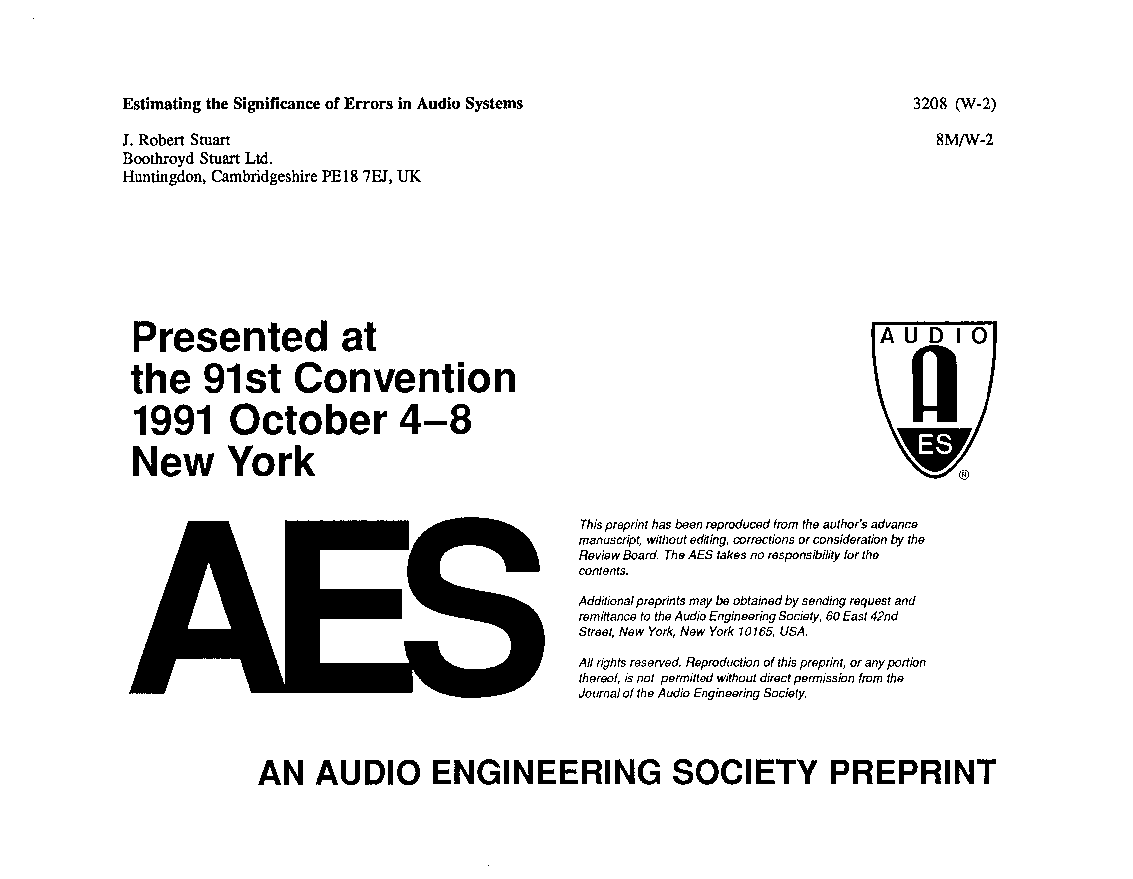Home / Publications / E-library page
You are currently logged in as an
Institutional Subscriber.
If you would like to logout,
please click on the button below.
Home / Publications / E-library page
Only AES members and Institutional Journal Subscribers can download
A companion paper evolved a method for estimating the detectability, audibility and loudness of noises and distortions by calculating masked excitation and loudness patterns for a signal as well as returning a single-number loudness estimation. This first step concentrated on steady-state measurements. How do we transfer such knowledge to predict the significance of errors on programme material? To succeed even partially would improve the fact/fantasy ratio! With this goal, the author concentrates on several relevant non-linear perceptual phenomena and mechanisms. Guidelines are then developed for minimally audible distortions, noise, noise modulations and other errors. Central to estimating the significance of an error is to account for loudness and spatial context, and to quantify the non-linear perceptual processes involved in the formation of external acoustic objects. The paper addresses difficulties of A/B and nulling tests.
Author (s): Stuart, J. Robert
Affiliation:
Boothroyd Stuart Ltd., Huntingdon, Cambridgeshire PE18 7EJ, UK
(See document for exact affiliation information.)
AES Convention: 91
Paper Number:3208
Publication Date:
1991-10-06
Import into BibTeX
Session subject:
Psychoacoustics
Permalink: https://aes2.org/publications/elibrary-page/?id=5508
(877KB)
Click to purchase paper as a non-member or login as an AES member. If your company or school subscribes to the E-Library then switch to the institutional version. If you are not an AES member Join the AES. If you need to check your member status, login to the Member Portal.

Stuart, J. Robert; 1991; Estimating the Significance of Errors in Audio Systems [PDF]; Boothroyd Stuart Ltd., Huntingdon, Cambridgeshire PE18 7EJ, UK; Paper 3208; Available from: https://aes2.org/publications/elibrary-page/?id=5508
Stuart, J. Robert; Estimating the Significance of Errors in Audio Systems [PDF]; Boothroyd Stuart Ltd., Huntingdon, Cambridgeshire PE18 7EJ, UK; Paper 3208; 1991 Available: https://aes2.org/publications/elibrary-page/?id=5508